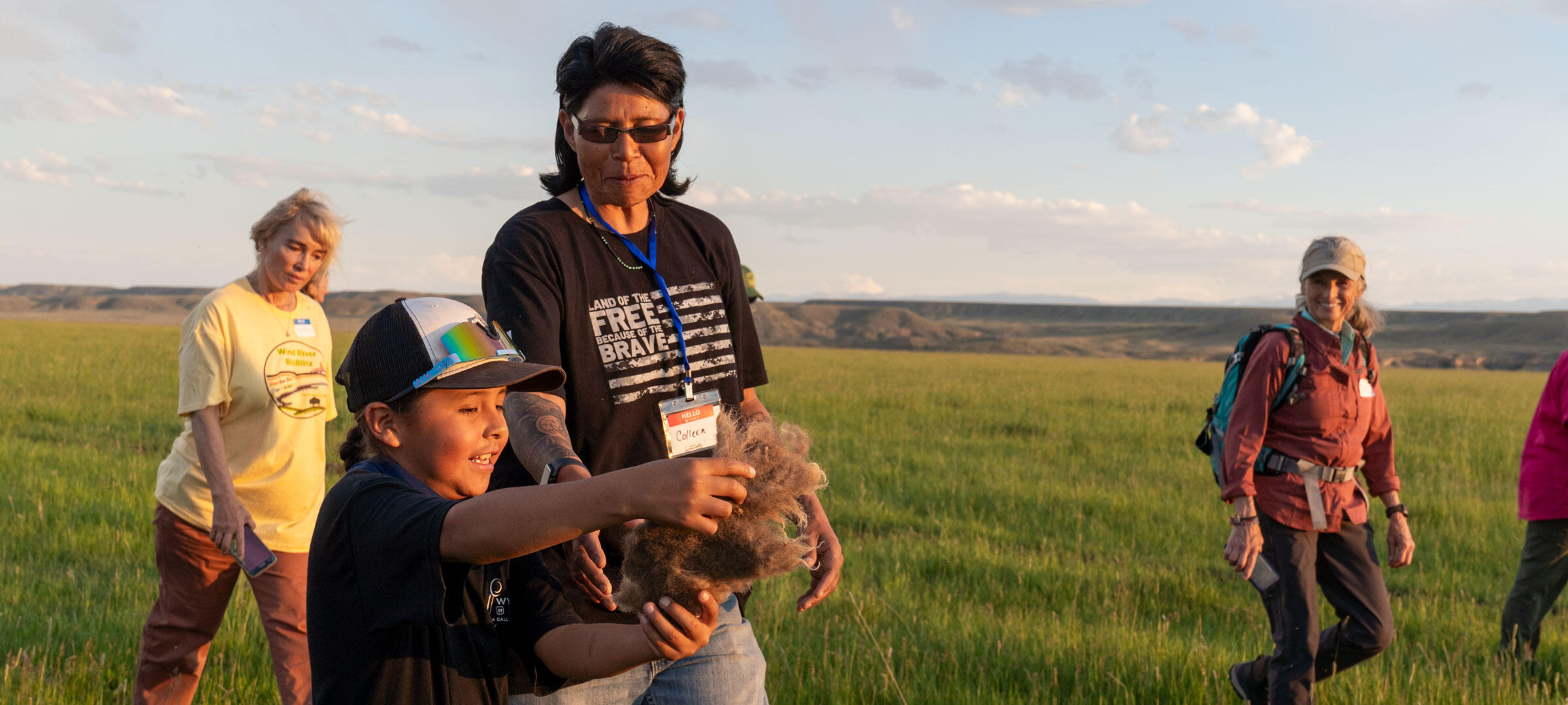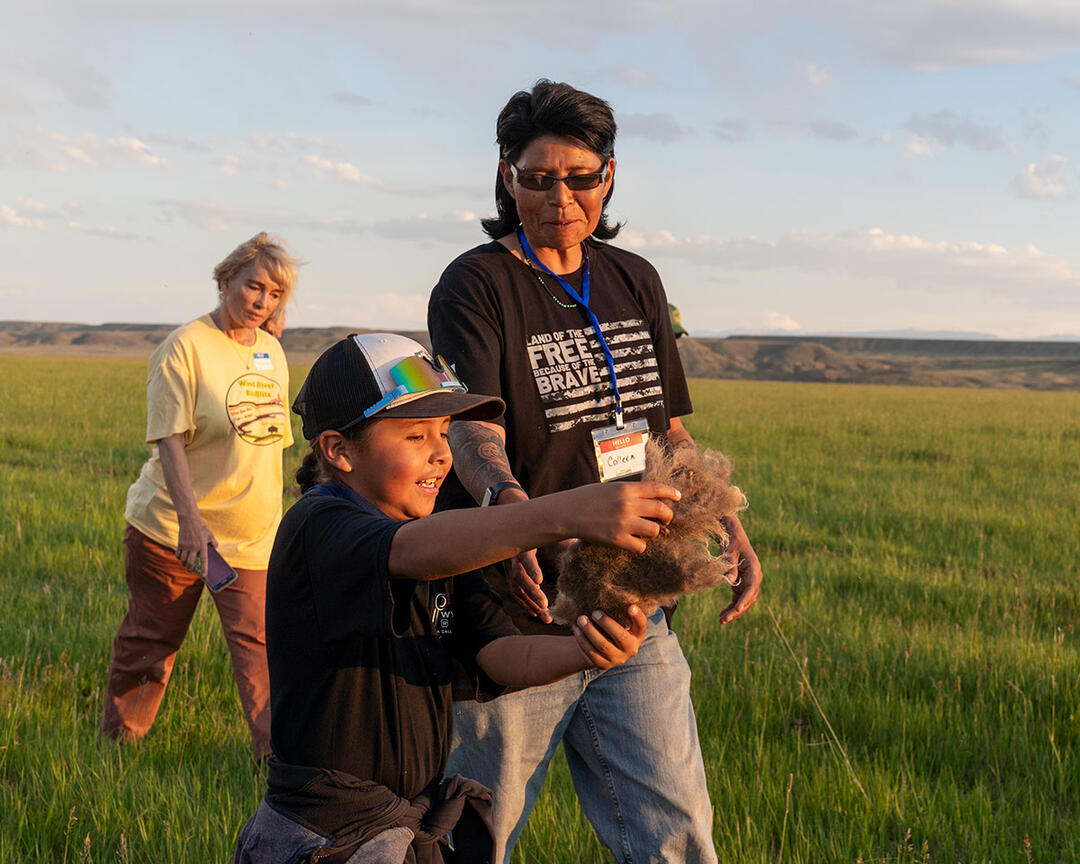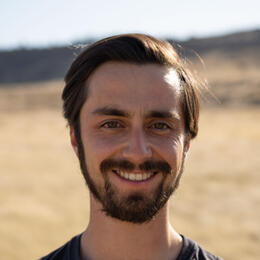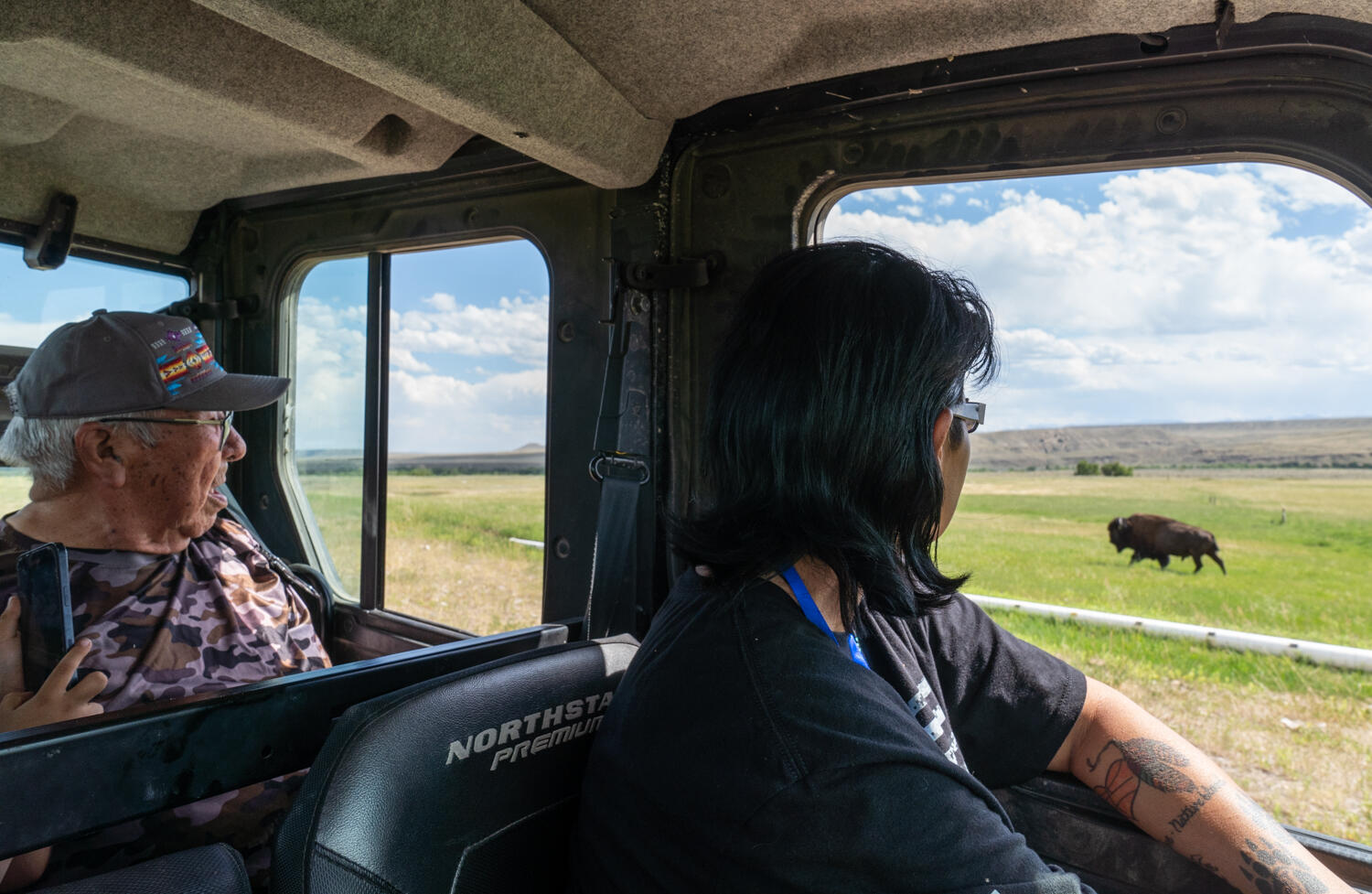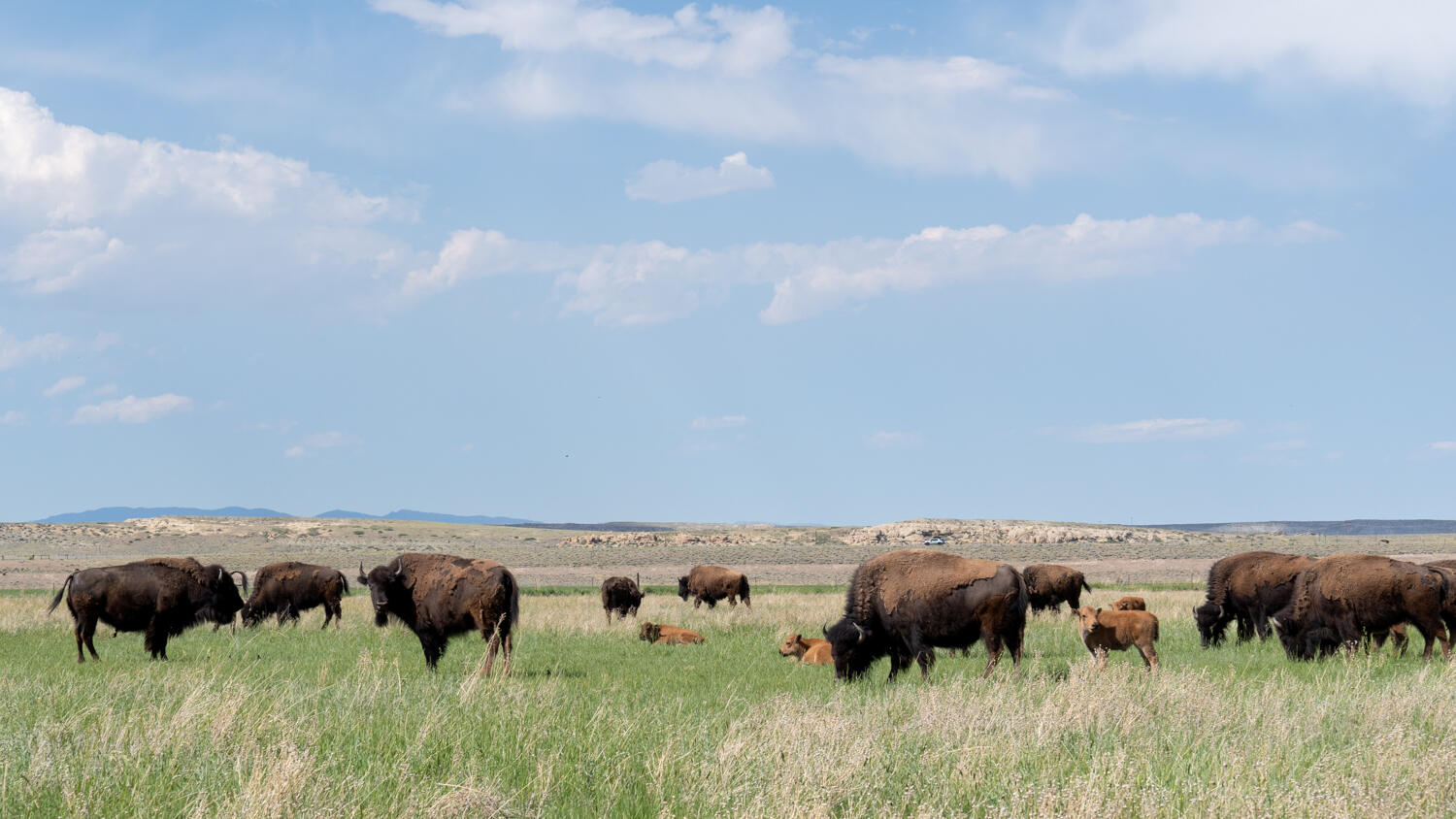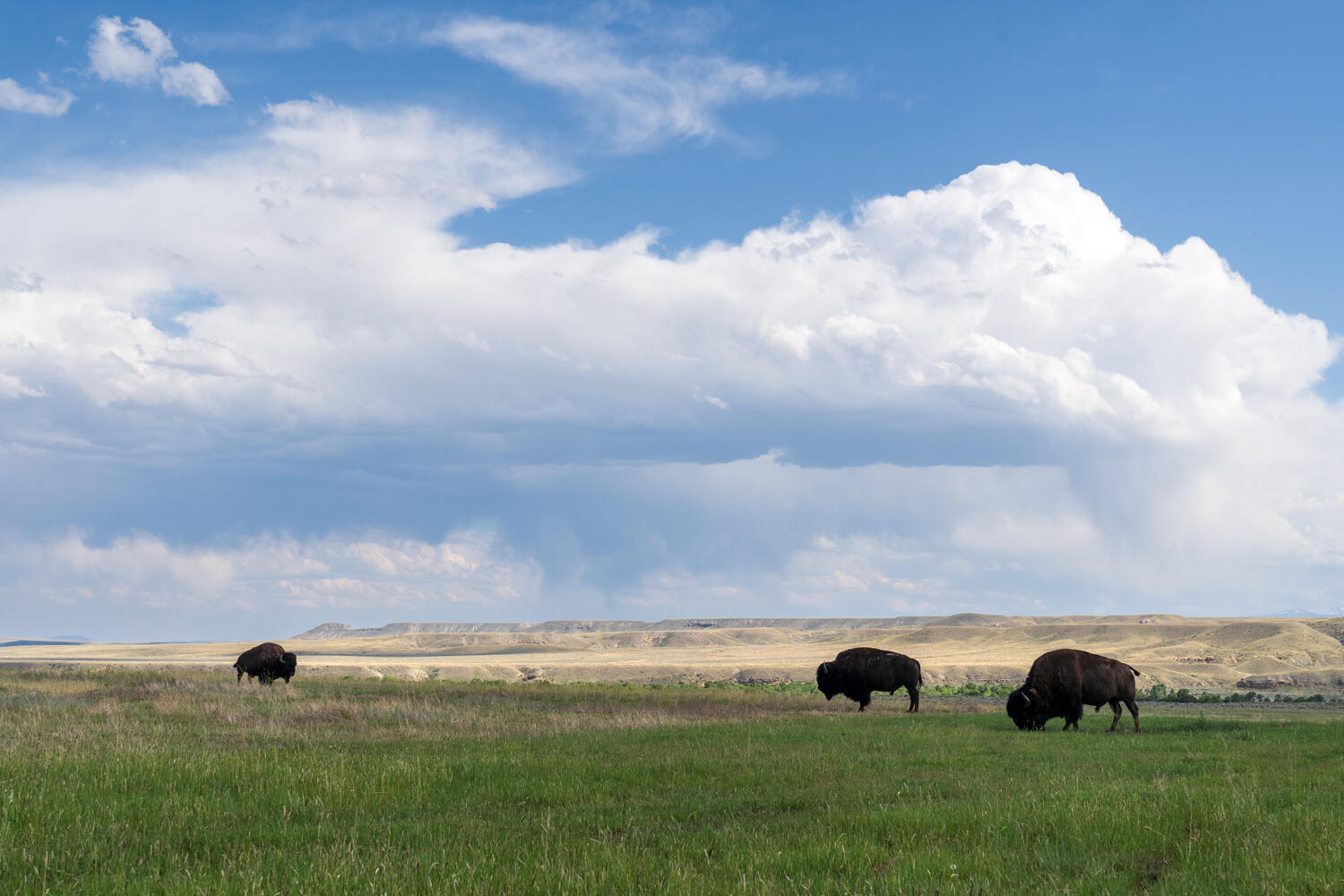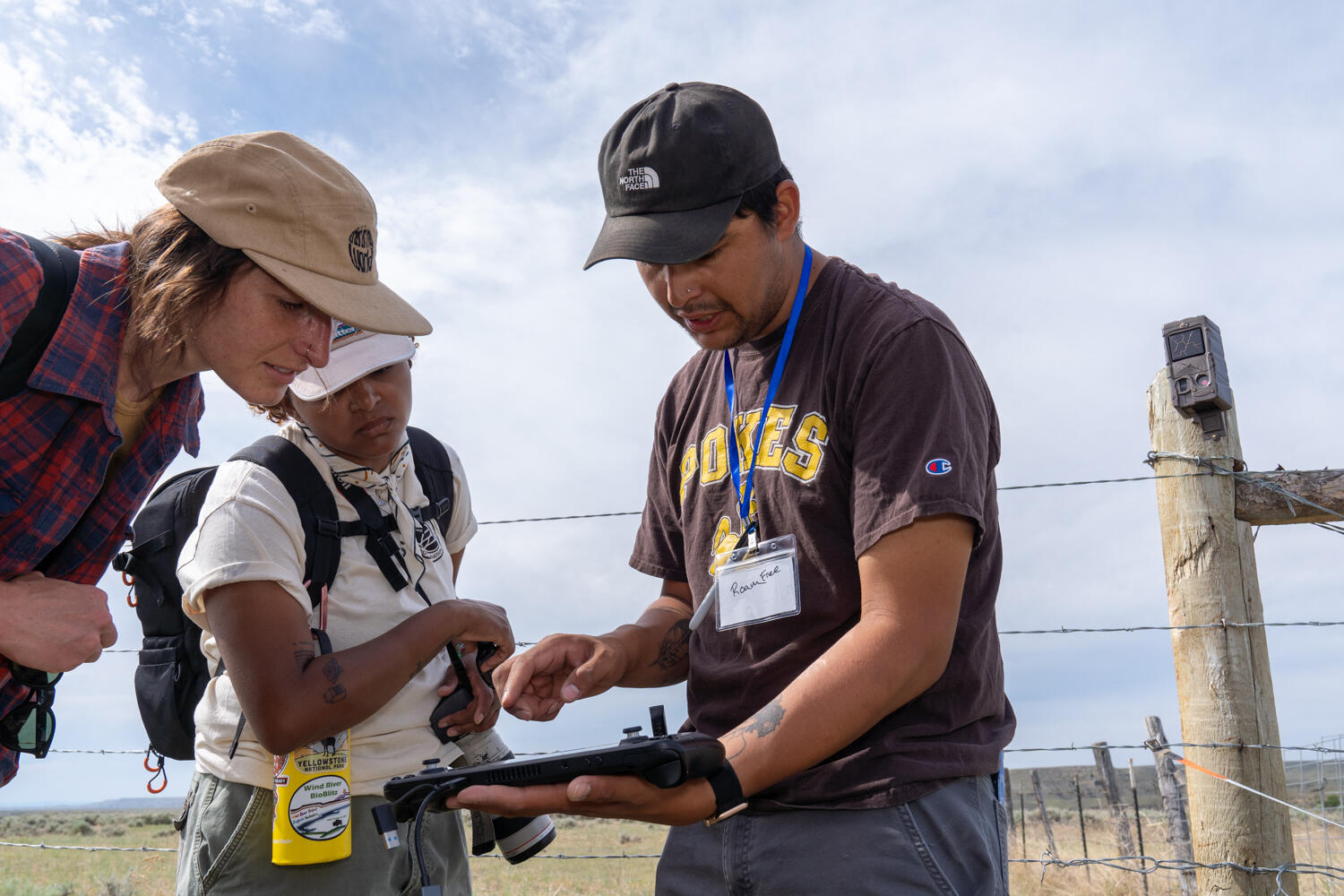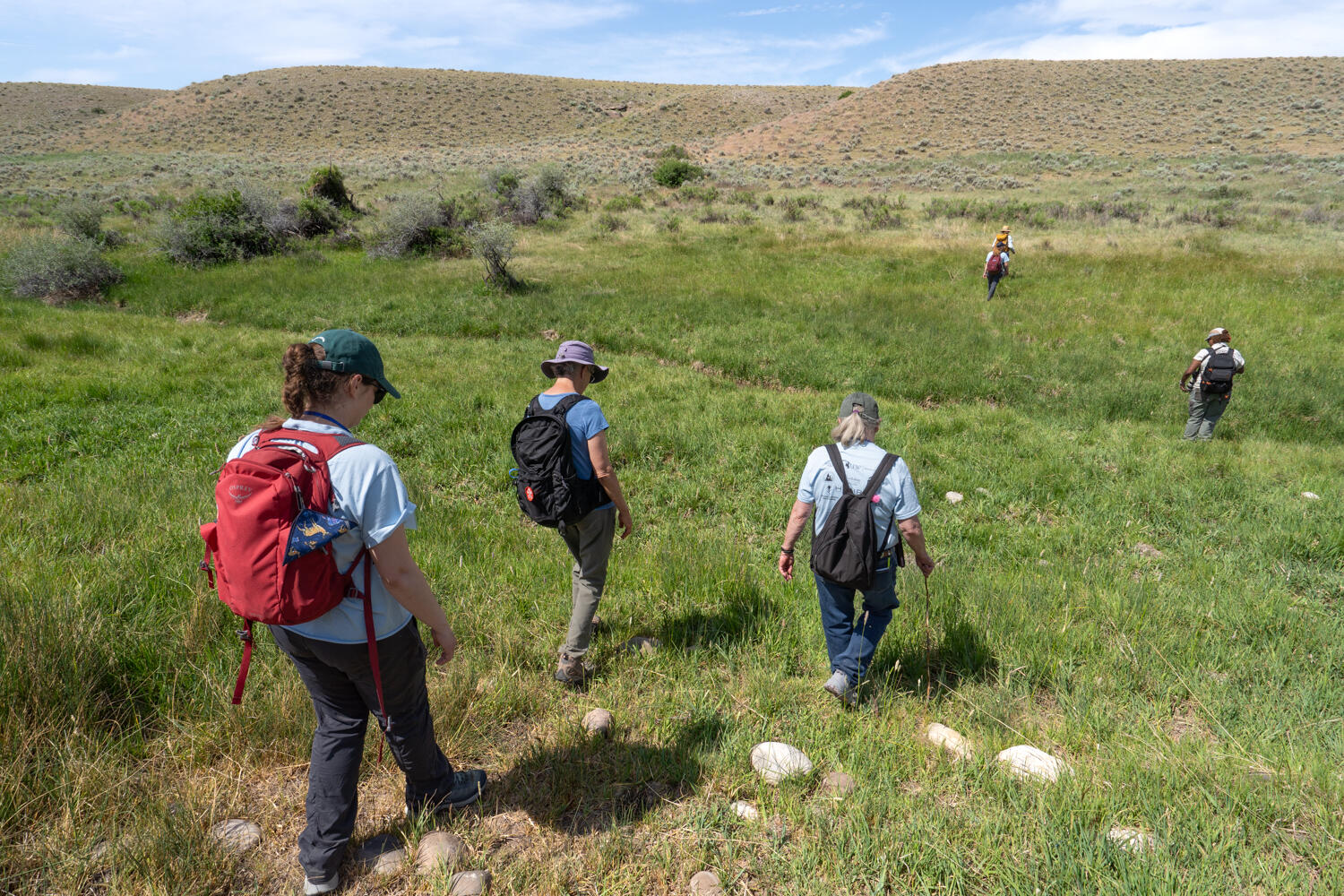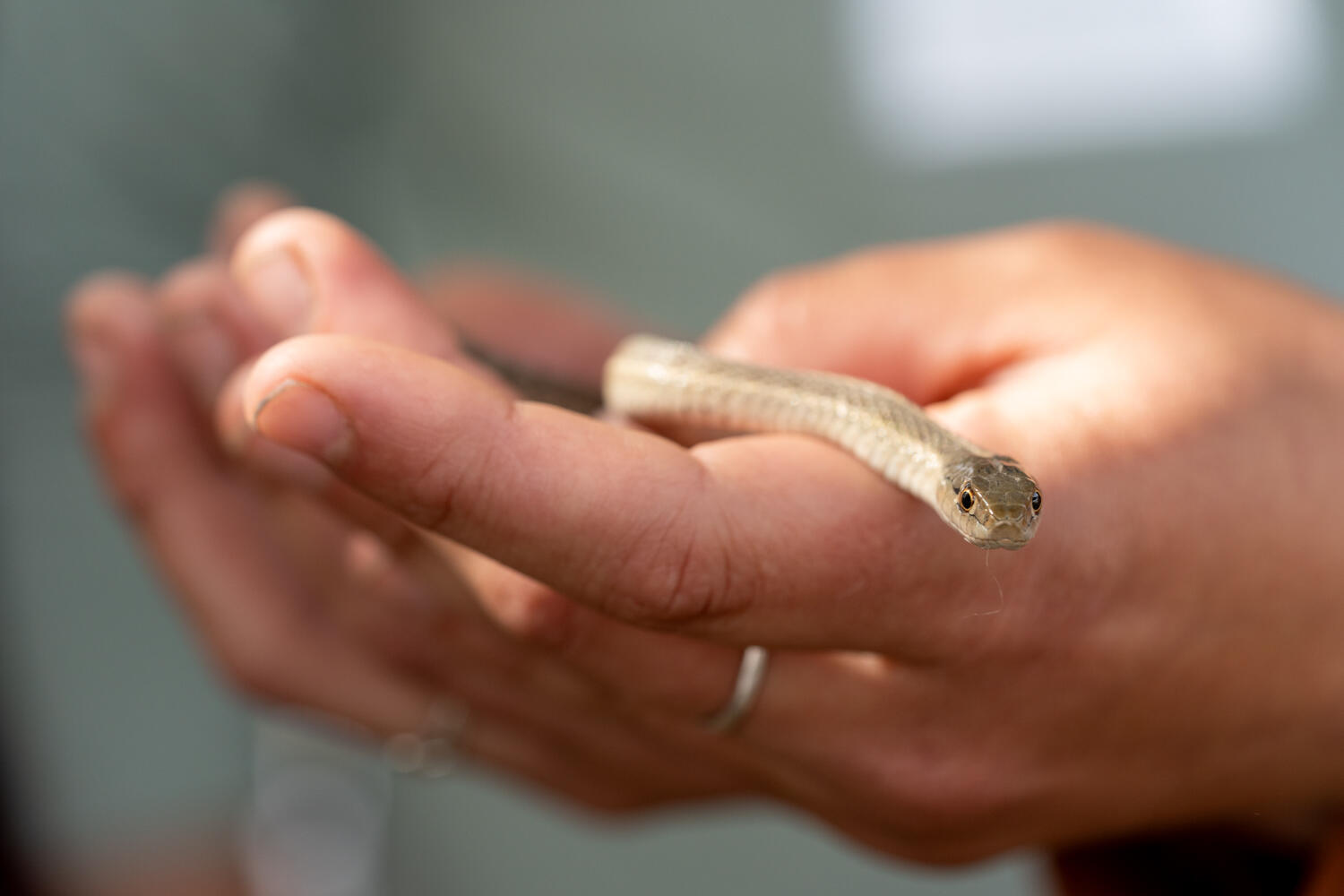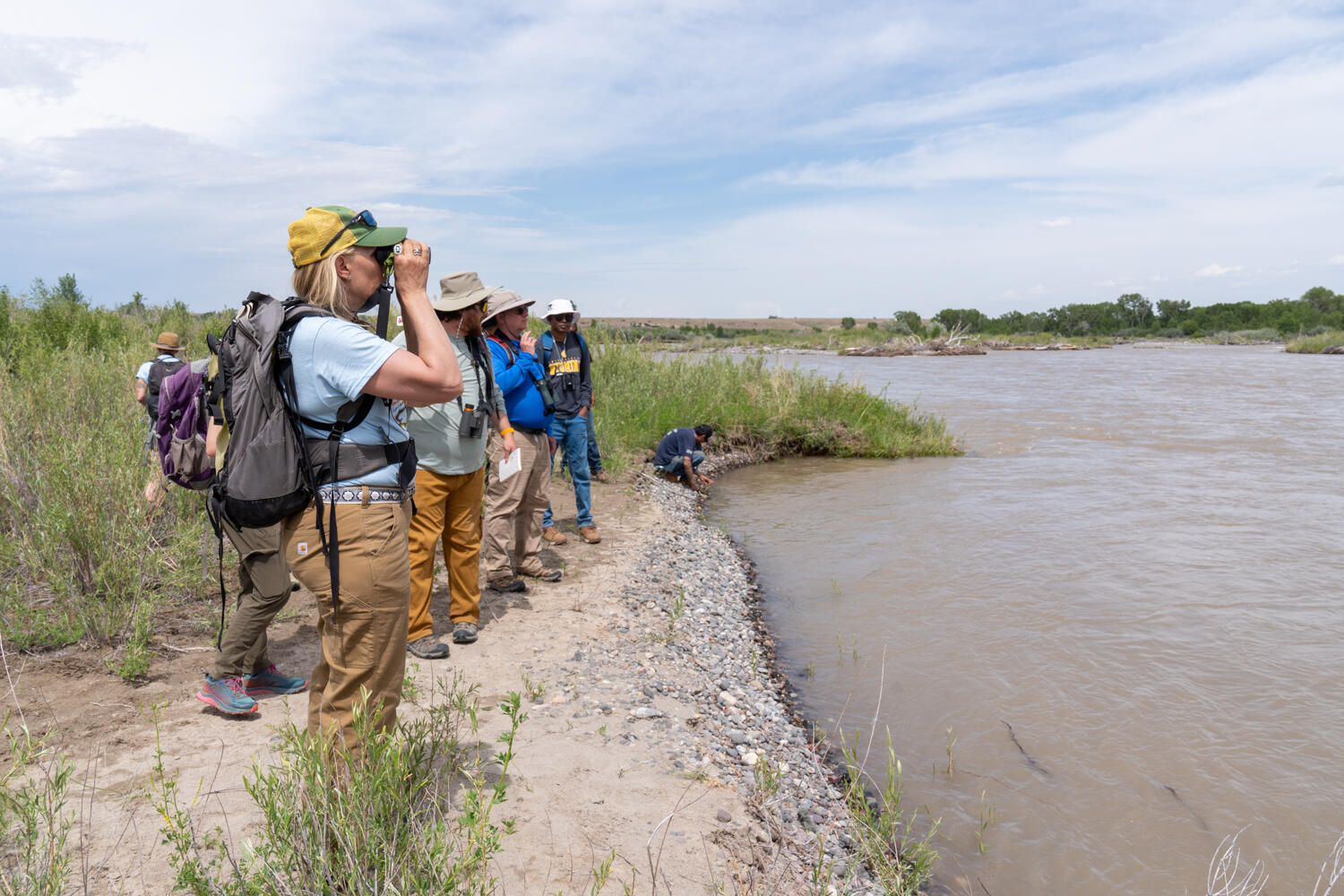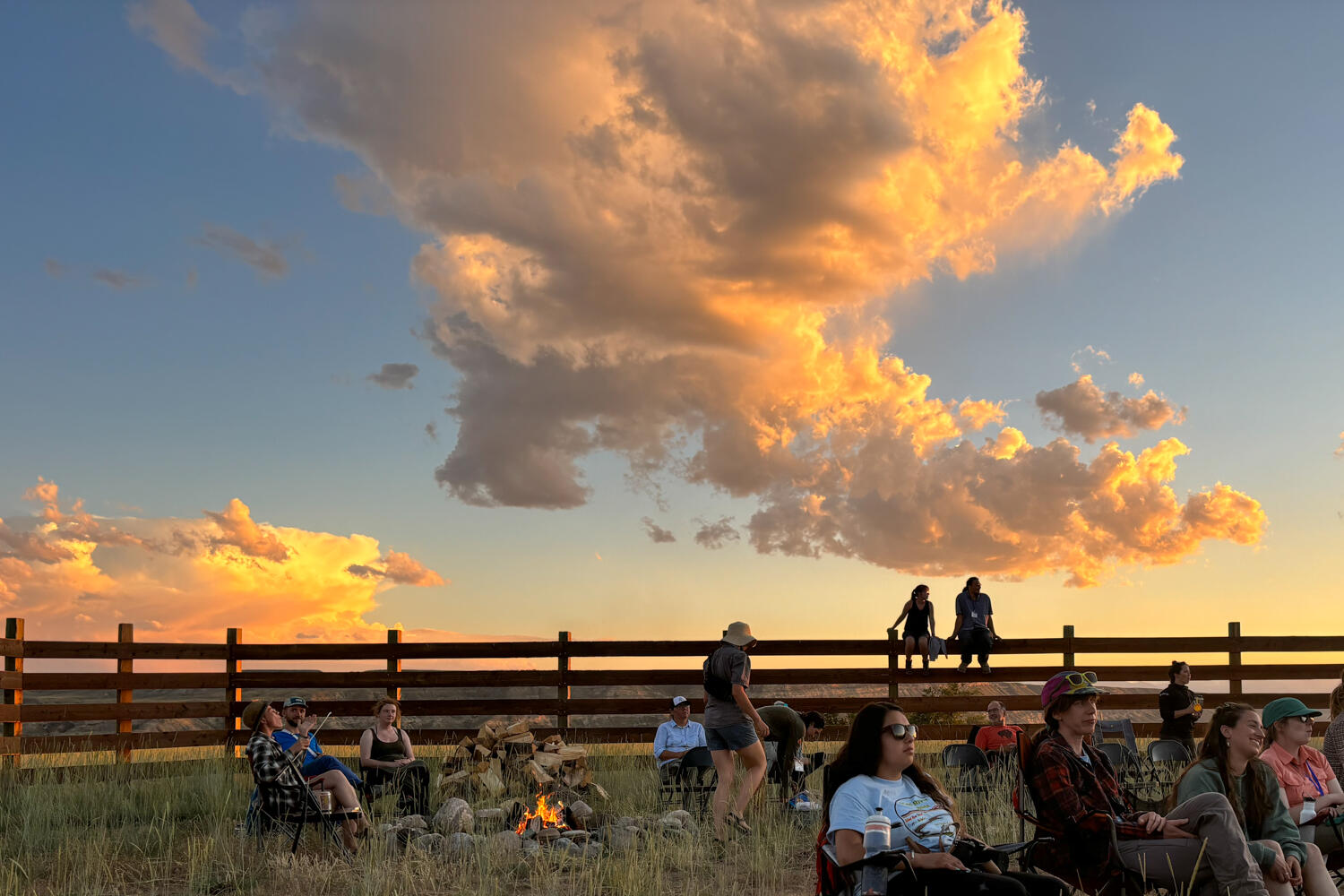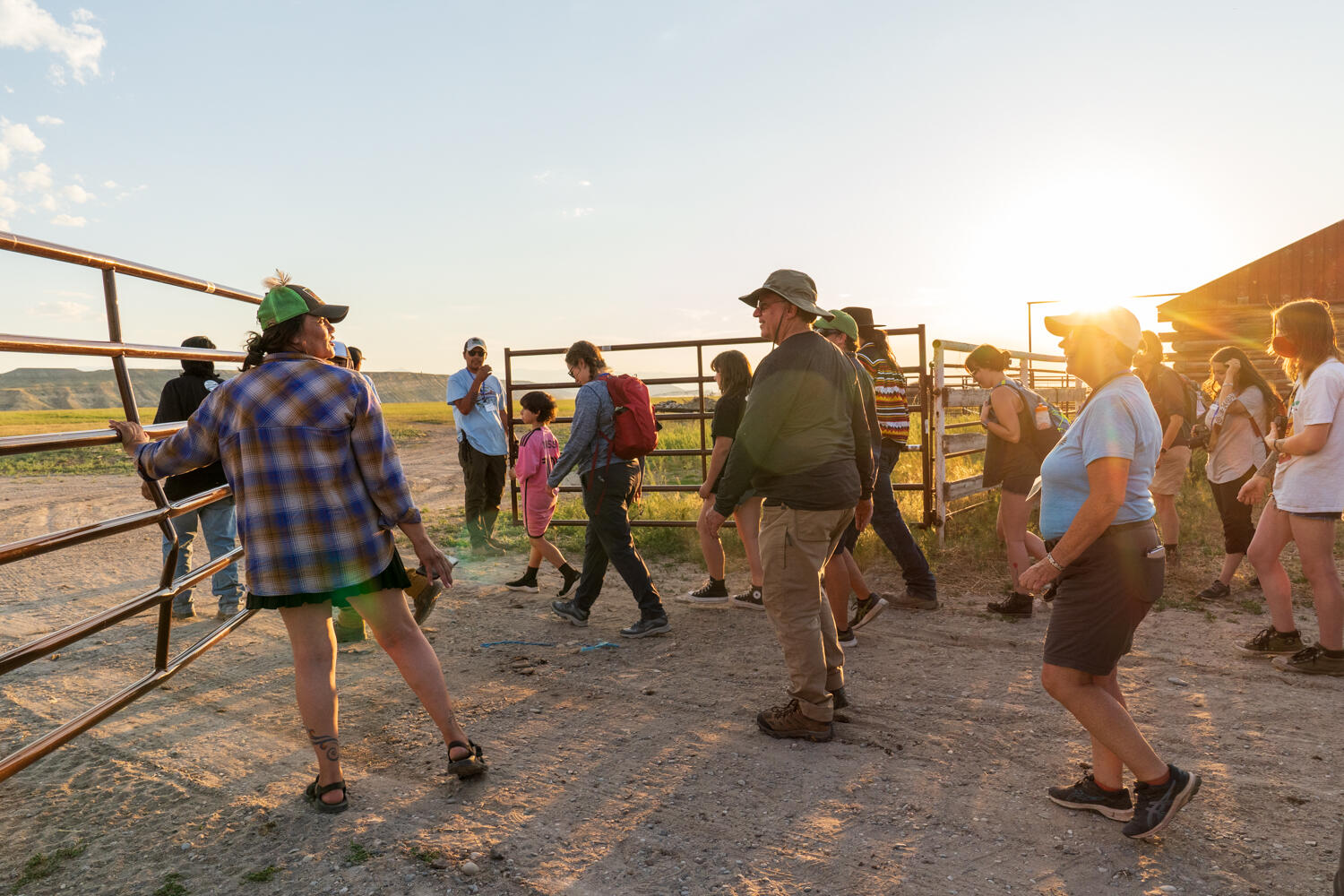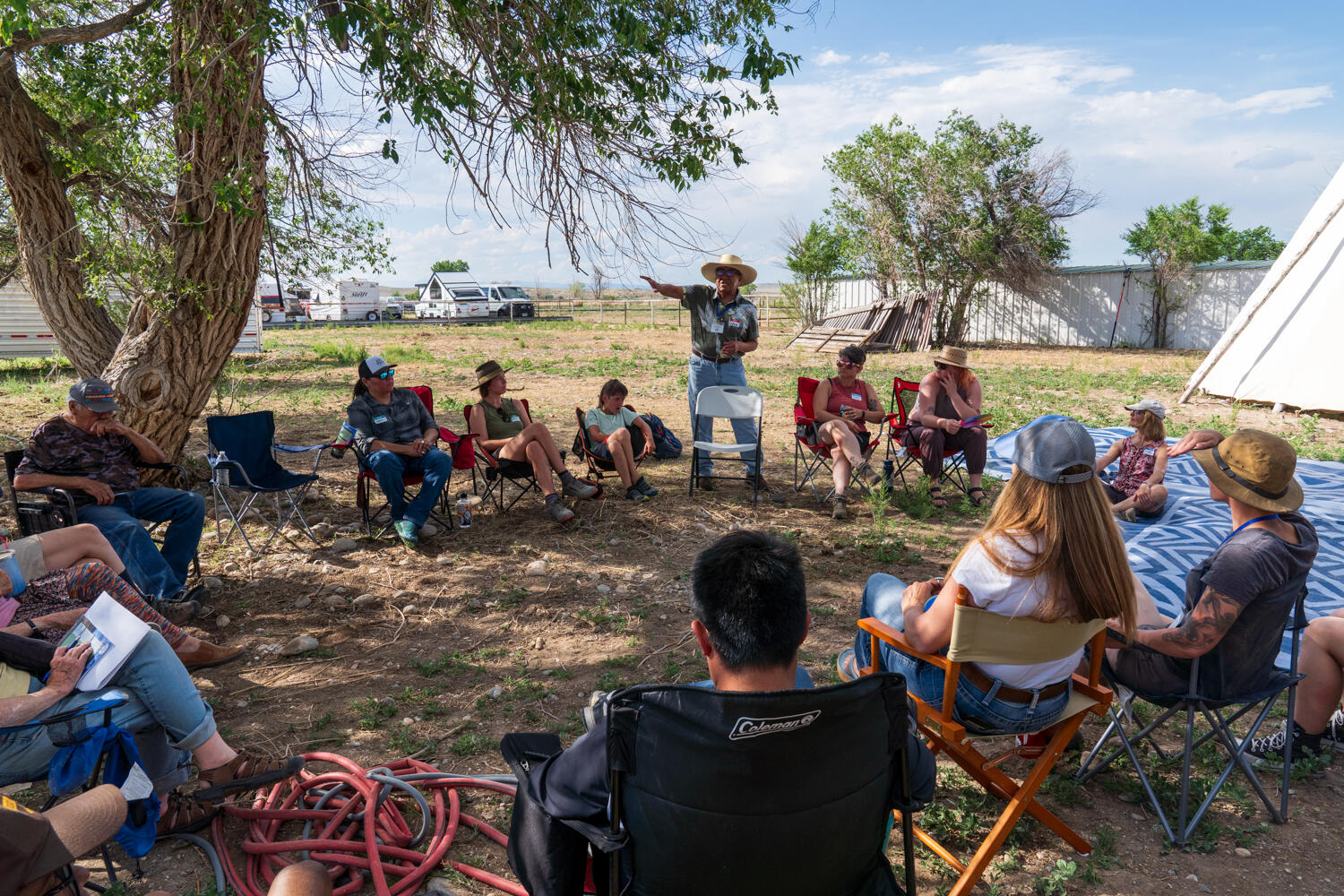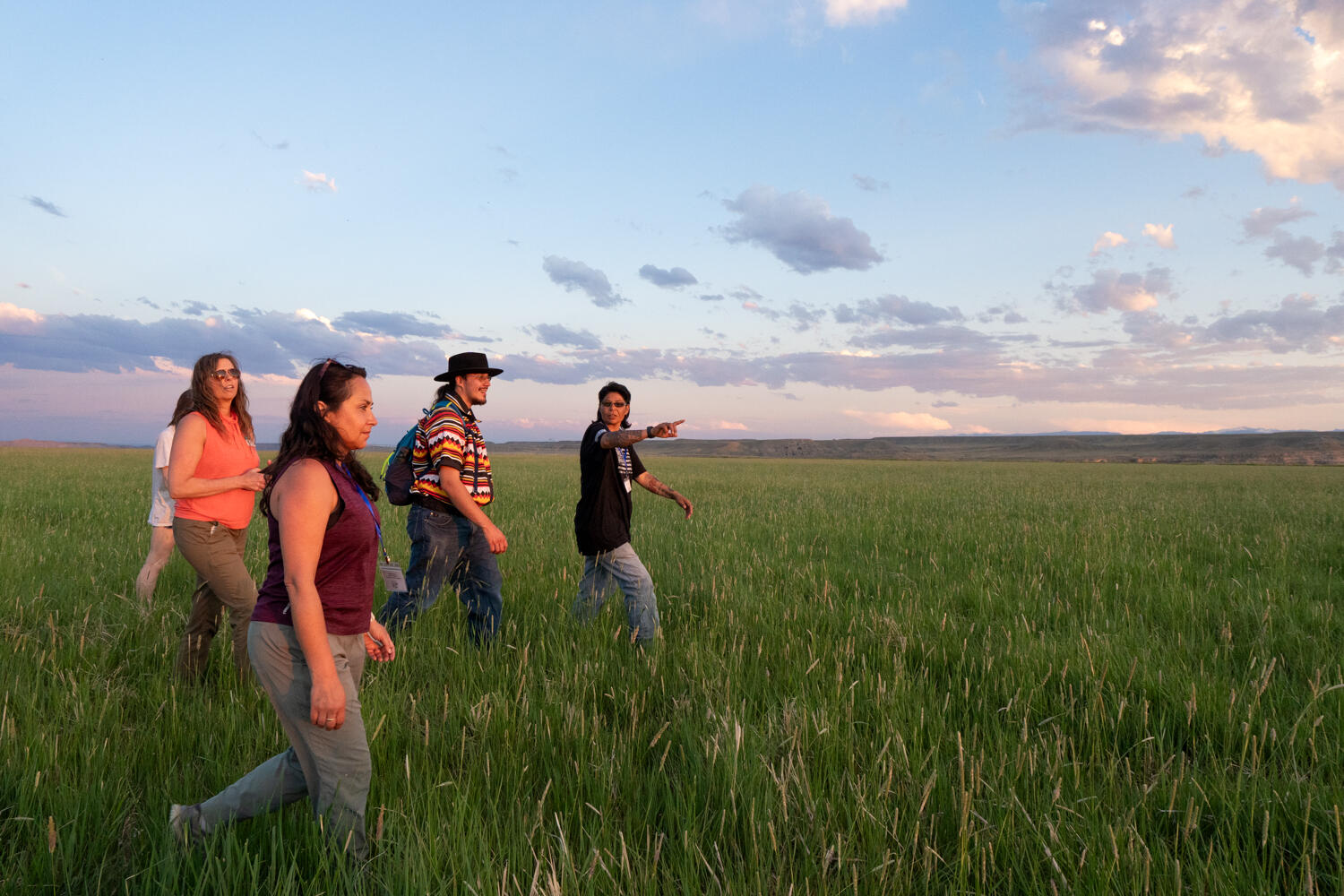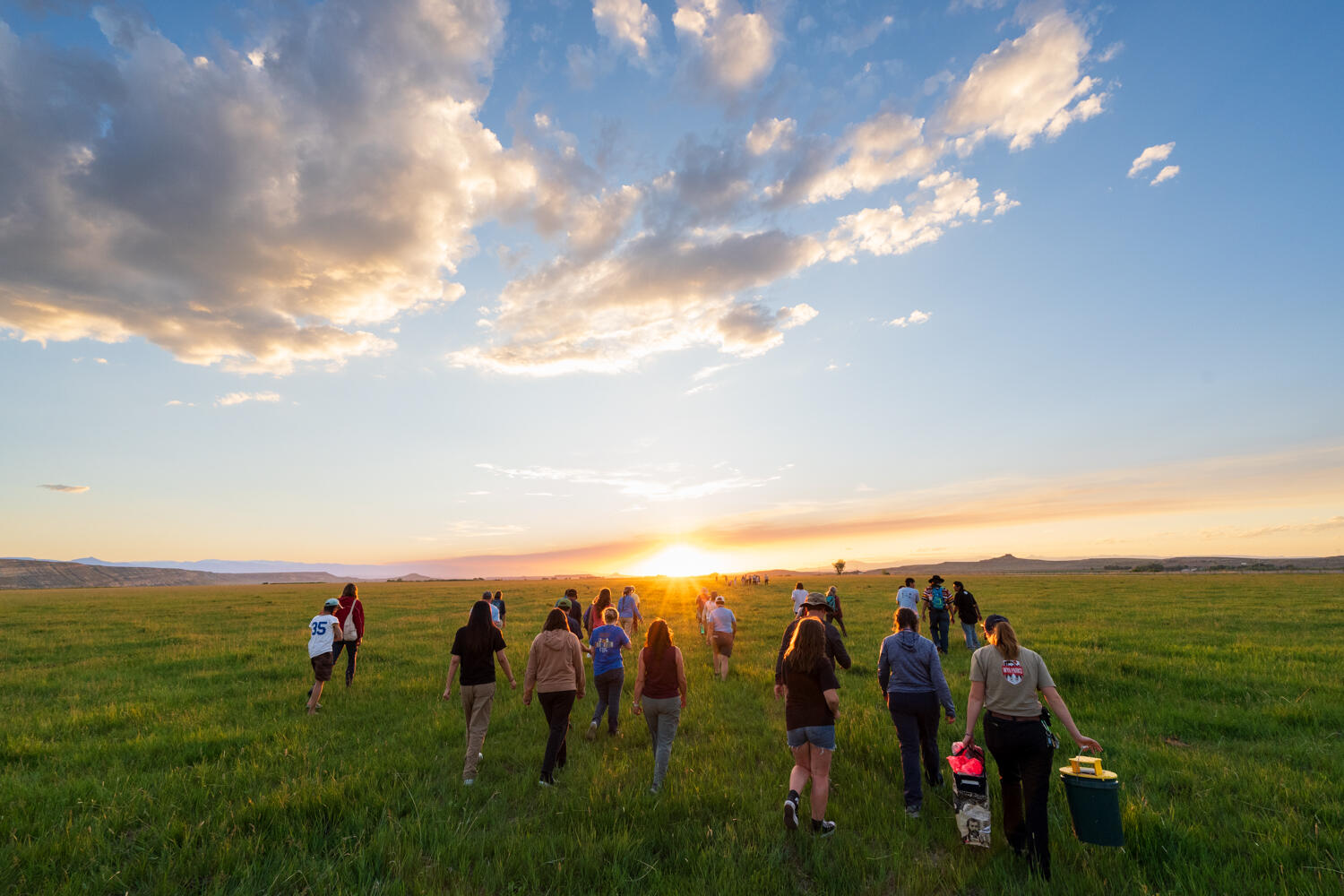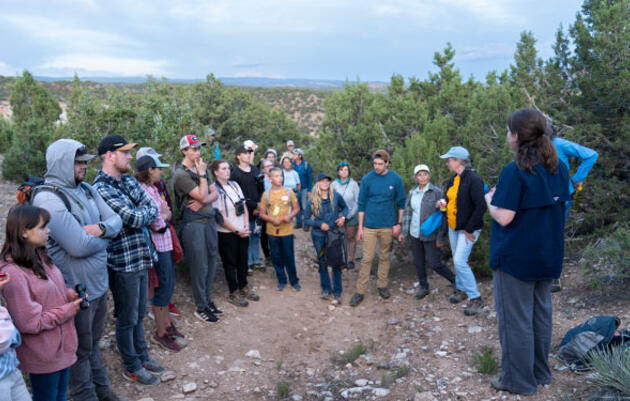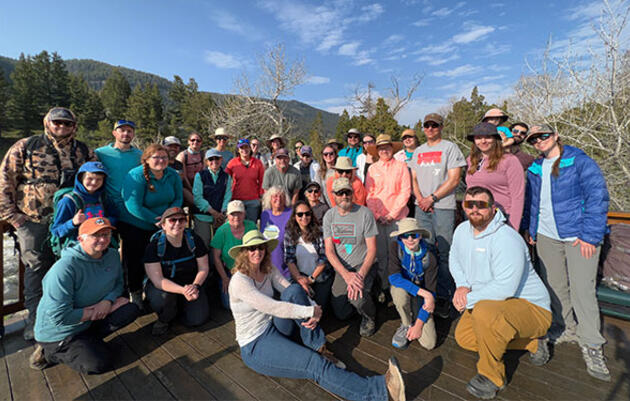It’s a hot, sunny day on the Wind River Reservation. Colleen Bell is driving two Northern Arapaho elders, William C’Hair and Nora Oldman, and Landon, their young relative, in a UTV through a grassy field. She’s showing them the Eastern Shoshone Buffalo herd as a kickoff to the Wind River BioBlitz. Colleen, who is Arapaho and Shoshone, works for the Wind River Tribal Buffalo Initiative. They all share a connection to Buffalo that extends back countless generations.
“I tell a lot of people how amazing it is to have Buffalo back on our reservations,” Colleen says as we drive past three resting bulls. “That’s what we had a long time ago and this is where they belong.” “Yeah,” William agrees, “millions of them.”
Buffalo provided clothing, tools, toys, shelter, and a critical food source for Shoshone, Arapaho, and many other Indigenous peoples. They were also foundational to spirituality and cultural belief systems.
In the 1890s, European settlers exterminated Buffalo from this land as part of their effort to remove and subdue the Indigenous peoples. For the last two years, the WRTBI—led by Jason Baldes, an Eastern Shoshone biologist—has worked to bring bison back to the Wind River Reservation.
We arrive at some of the fruits of that labor: about fifty female Buffalo and their red calves. Landon starts making excited chirping sounds from the UTV window as he tries to call them closer. We all spend a while marveling at the animals and how right they look on the land. “It is really awesome to be with buffalo, the land here. I feel really good when I come out here,” Colleen says.
As we drive back to the WRTBI headquarters, passing a tipi she helped set up a few days prior, Colleen reflects on the healing the Buffalo have brought, “This is the real thing right here, out here with the Buffalo. The real way we should be. Our culture. Our tipis.”
Ecosystem Engineers
Buffalo have profound impacts not only on people, but all life they touch. They are considered ecosystem engineers for their transformative impact on the land. Their hooves aerate the soil. Their dung provides nitrogen, phosphorus, calcium, sulfur, and magnesium for plants and other animals. By rolling on their backs, they create wallows that hold water and provide habitat for specific plants and insects. Mountain Plovers even use their fur to line their nests so that their eggs maintain a proper temperature.
By reintroducing Buffalo, the WRTBI hopes to restore the health of the land and species that have disappeared. Some of those are culturally important plants that serve as traditional Shoshone and Arapaho medicines.
Three years since its inception, the WRTBI has restored more than 70 Buffalo to the Wind River Reservation. Now, they want to start evaluating the effects the Buffalo are having, but they lack the baseline data to answer that question. So in 2023, Jason proposed the idea of holding a bioblitz to the University of Wyoming Biodiversity Institute.
Wind River BioBlitz
Each year, the University of Wyoming Biodiversity Institute, Audubon Rockies, and Wyoming State Parks, along with many other annual partners, have hosted an annual bioblitz in Wyoming. The purpose of a bioblitz is to survey as many species of plants, animals, and fungi as possible in a given area over a given time period. Past bioblitzes have surveyed Wyoming State Parks and nature preserves, but never the Wind River Reservation.
The Biodiversity Institute brought Jason’s idea to the organizing team, and the planning began. While bioblitzes usually attract participants from around the state, involving the local community members was especially important this time to Jacelyn Downey, Audubon Rockies education program manager and a key organizer of the bioblitz. “I want people to come, learn about biodiversity, have fun, and understand more about how researchers gather the information,” she said. Because there are such deep ties to the land at this bioblitz, she also saw it as an opportunity to marry traditional ecological knowledge with Western science.
After the idea was confirmed, Jason tasked WRTBI employees Albert Mason Jr. and Xavier Michael-Young with coordinating WRTBI’s involvement. As a master’s student at the University of Wyoming, Albert was already using trail cameras to survey wildlife amid the Buffalo. To him, the event sounded like a good way to collect more of the data they needed. “We’re not experts in birds or insects, so it’s good to bring all these heads together and get this data collected,” he said. It also presented an opportunity to bring the local community to the site and build their awareness of WRTBI’s work.
And so on June 13, about a hundred people—children, parents, elders, biologists, and naturalists—gathered at the WRTBI headquarters to survey the biodiversity there. Birders rose twice at 6:00 am and found species like Vesper Sparrows and Brewer’s Sparrows in the sagebrush, as well as a coyote den with pups. They bushwacked through willow thickets to find Yellow Warblers and Bullock’s Orioles along the Wind River. Plant surveyors braved the shadeless midday heat to lay out quadrats and tally the species within them. Other participants donned sweep nets to scour the grasses for the insects, while herpetologists turned up a northern leopard frog, common sagebrush lizard, and short-horned lizard. Ultimately, the team found 71 bird, 70 insect, 58 plant, eight mammal, and four reptile species.
On Saturday evening after a hot day of surveying, the participants gathered in a corral for a concert by Christian Wallowing Bull, a Northern Arapaho musician. Beneath billowing orange clouds and a purple sky they sat and listened to Christian sing until dark. Some even slept there.
More Than Data
After a hot midday survey, I sat down next to Marlin Spoonhunter, a Northern Arapaho elder. Since so many of the bioblitz attendees were from outside the Wind River Reservation, I asked him what he wanted them to learn. He told me that he wanted them to learn about the history of the reservation, first and foremost, the way land has been taken from the Eastern Shoshone and Northern Arapaho, and how it still affects people today. But he also wanted people to see a more positive picture of the Native people there. Beyond all the stories of drugs and violence, he wanted visitors to see how many Native people at the event had advanced degrees and how much the WRTBI had accomplished.
Other participants had similar feelings. “It’s such a powerful thing, what Jason and the WRTBI are doing. It really has the potential to be transformative,” said Birch Dietz Malotky, coming from Laramie. “Ultimately, I think it was the most meaningful to interact with our Shoshone and Arapaho neighbors,” wrote Lennie Poitras in an email interview. “I have lived in Lander for 26 years but my interactions have been few and less meaningful than those we shared at the BioBlitz,” Dr. Stephen Williams, a University of Wyoming professor emeritus, wrote, “The interface with the Wind River tribes was of course the most phenomenal part of the BioBlitz, especially conversations with tribal members, eating traditional food, and listening,”
As I drove home that night, Marlin’s words repeated in my head. There was something special about this bioblitz, but what was it? Ostensibly, a bioblitz is about finding as many species as possible. And while we did want to collect baseline data, that’s not where the magic was. The magic was in bringing people together around Buffalo and the species they benefit. It was in bringing elders and their grandchildren together. It was in creating an opportunity for WRTBI staff to showcase their incredible work to outsiders. It was the chance for outsiders to see Native communities as leaders of conservation.
Hopefully, what the Wind River BioBlitz produced that was even more important than data was bridges.
The Wind River BioBlitz was made possible by collaboration with the Wind River Tribal Buffalo Initiative, University of Wyoming Biodiversity Institute, High Plains American Indian Research Institute , Wyoming State Parks, Wyoming Game and Fish Department, Wyoming Natural Diversity Database - WYNDD, University of Wyoming Extension, Wyoming Bird Initiative for Resilience and Diversity, Wyoming Naturalists, Rocky Mountain Herbarium, and Wyoming Native Plant Society.

